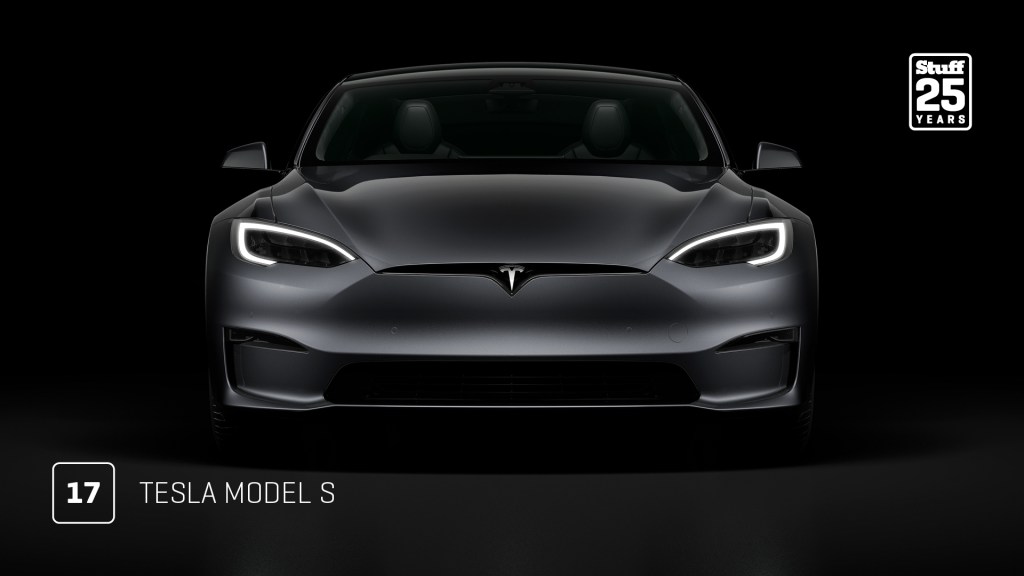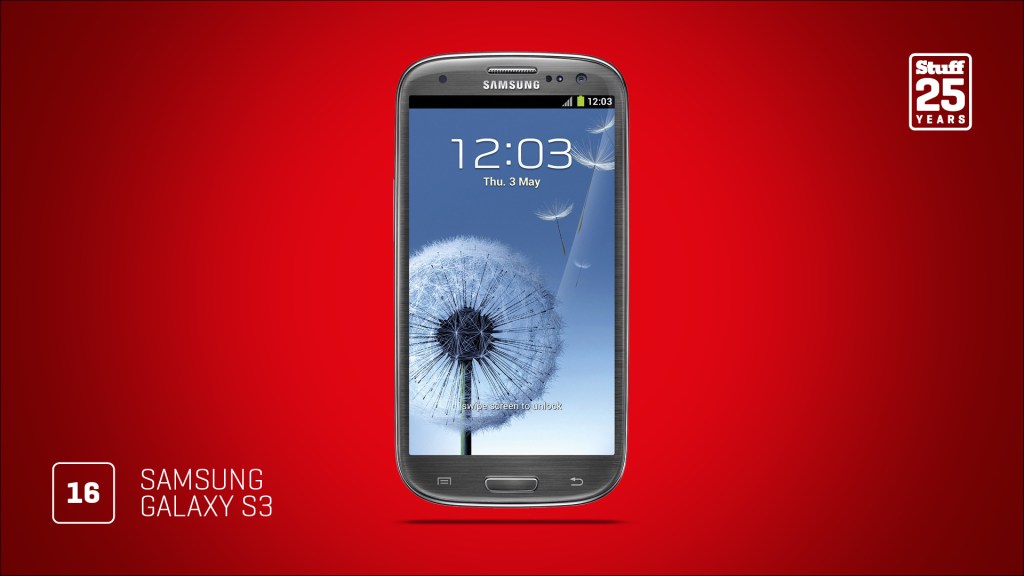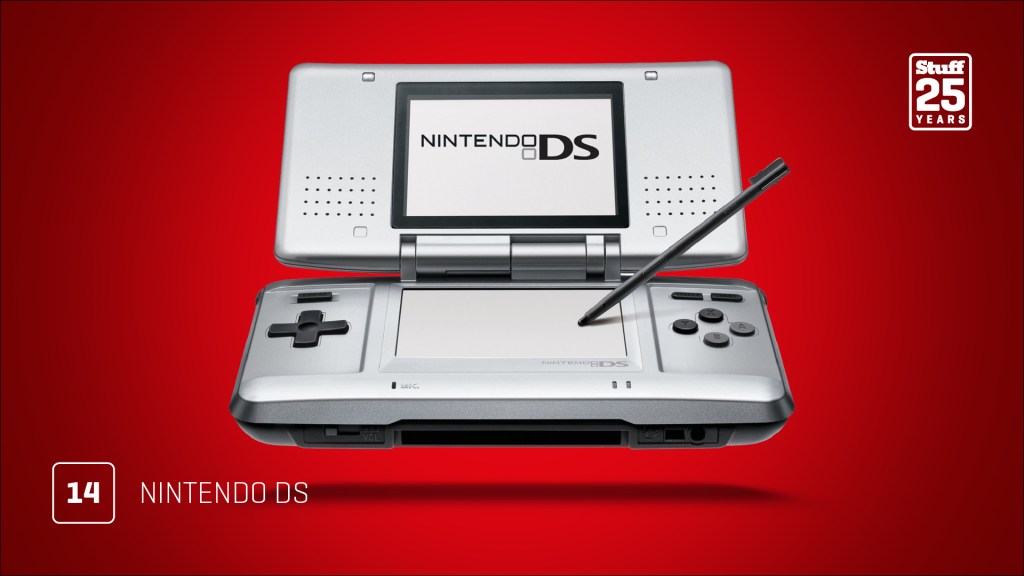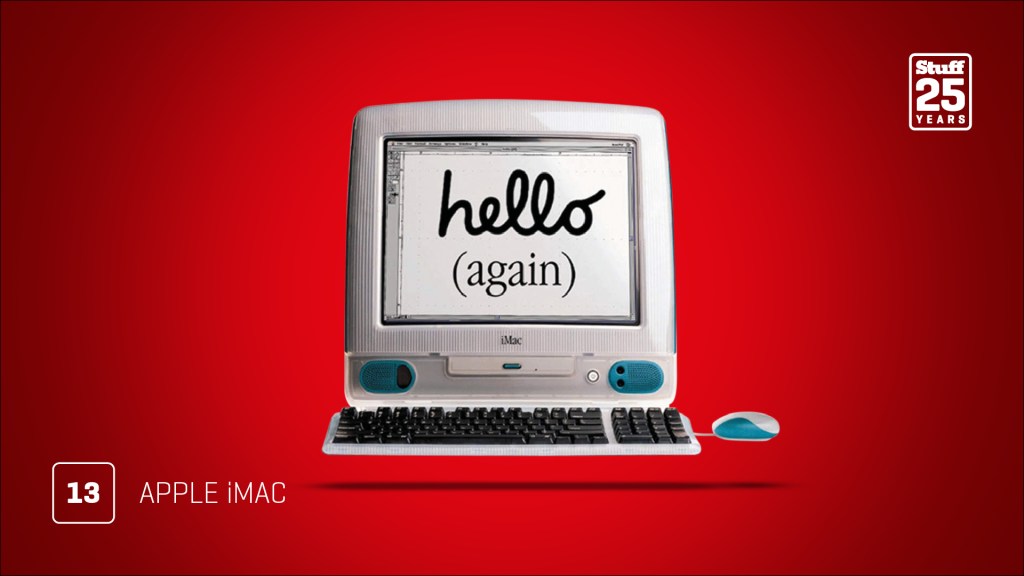IN ASSOCIATION WITH TIMOTHY TAYLOR’S
The 25 best gadgets from 25 years of Stuff
This is a countdown of our favourite modern tech, including cracking consoles, fabulous phones, spanking speakers and more. Here are the greatest gadgets of Stuff's lifetime.
IN ASSOCIATION WITH TIMOTHY TAYLOR’S

18 Next Learning Thermostat

Before this thing appeared in 2011, the most autonomy you were ever likely to find on a thermostat was a timer switch. The very first smart thermostat of its kind, the Nest took your existing heating system to the
next level by learning your schedule and changing the temperature when you needed it to.
Who could have imagined screwing a rotating screen on the wall to control your indoor climate? But while automatically adjusting the heating without you lifting a finger was arguably the most impressive talent of the Nest, the fun didn’t stop there. Perhaps the most used feature was the ability to set the temperature in your home from any location using the built-in Wi-Fi connectivity. Preparing the house for maximum toastiness while still waiting on a cold platform for your train home, pausing only to snap the icicles off your nose, was no longer a fantasy but an everyday feat.
What’s more, the Nest was easy for the average punter to install: with clear instructions in the box, anyone could wire it up to replace their existing dumb ’stat. And for the DIY-averse of us, it was just as simple for a regular electrician to set up.
With new generations improving over time – and inspiring lots of other smart thermostats – those of us living with intelligent heating in 2021 can no longer imagine actually getting up to turn the heating on (or off if you’re a dad).
RELEASED 2011
17 Tesla Model S

Elon Musk may be doomed to go down in history as a gigantic space-berk, but there’s no denying the significance of Tesla’s role in killing off the whole petrol thing. And that makes the Model S arguably the most important car since… well, the Model T.
When someone mentions electric cars you probably think of Musk’s Tesla brand first, and for good reason. The most ‘mainstream’ e-vehicle ever, the Model S offered ace performance but also added clever features to bring never-before-seen levels of autonomy and convenience. So while 0-60 times of around two seconds were crazily impressive, you also got a huge 17in infotainment screen, making it easy to control your music and follow navigation guidance once you got your breath back.
This five-door sedan is still going strong in 2021; and thanks to Tesla’s own Supercharger network, drivers have easy access to some of the UK’s fastest electric chargers. With most charges taking not much longer than your average visit to a petrol station, that’s one flaw that’s not half as flawy as it used to be.
Tesla’s Model S was the top-selling electric car of 2015 and 2016. It also paved the way for the Model 3, now the best-selling electric car worldwide. Having even won over gigantic Earth-berks like Jeremy Clarkson, the Model S simply has to be recognised as one of the best pieces of technology from the past 25 years.
RELEASED 2012
16 Samsung Galaxy S3

Lordy, how can we pick just the one Samsung Galaxy S-series phone? This spot could easily have been taken by the gorgeous Galaxy S7, or the Galaxy S5 and its killer camera. But let’s head back. Back to the days when each generation was a proper scramble for dominance.
The Galaxy S3 came out at a time when Samsung piled in every feature it could devise, and became a sort-of oracle for stuff we wouldn’t see in other Androids for years. Split-screen multi-tasking? A voice assistant? Motion-based gesture controls? A high-res OLED screen? It had them all… even if some were wonkier than a six-year-old’s milk teeth. This was the first Galaxy S phone with an ‘HD’ Super AMOLED screen… and 720p still looks sharp on a 4.8in display now.
It also marked a shift in Samsung’s design thinking. Boxy black bricks were out – this was a sleek, slim plastic pebble that wouldn’t be substantially bettered until 2015’s Galaxy S6.
RELEASED 2013
Apple Macbook Air

A classic Steve Jobs reveal: pulling the MacBook Air out of an office envelope to the gasps of an adoring crowd. Although limited in ports and power, the Air triggered the age of the ultrabook as rivals clamoured to ape its sleek form factor. The high price and slowish CPU initially held it back from mainstream adoption, but price drops and new tech enabled it to settle in as Apple’s entry-level notebook. The only flip-side of its success was the way it instigated a supermodel-style obsession with ‘thin’ that plagued Apple’s pro laptops for years.
RELEASED 2008
14 Nintendo DS

Echoing the classic Donkey Kong Game & Watch, the clamshell design of the DS suggested a handheld that wanted to be different. And it was, with dual screens, one of which you swished away at using a stylus. Some screamed “Gimmick!”, but Nintendo’s emphasis on accessibility and touch foreshadowed modern mobile tech. The games weren’t bad either – including a revamped Mario Kart with online play, a smart take on GTA that used the stylus and mic, and Brain Training – derided by ‘real’ gamers, but cementing the idea that gaming was now for everyone.
RELEASED 2004
13 Apple iMac

Prior to the iMac, desktop PCs were boring beige boxes – even Apple’s. This, though, was a computer you wouldn’t want to hide behind a pot plant. Like the original Mac, it was a computer for the rest of us… but the iMac showcased Apple’s ruthless side, ditching proprietary ports (in favour of USB) and even a floppy drive. Reviewers griped. Industry figures scoffed that Apple had blundered. Then sales figures came in. Within the year, rivals were gluing transparent plastic parts to their own PCs and wondering why they couldn’t match Apple’s success.
RELEASED 1998
